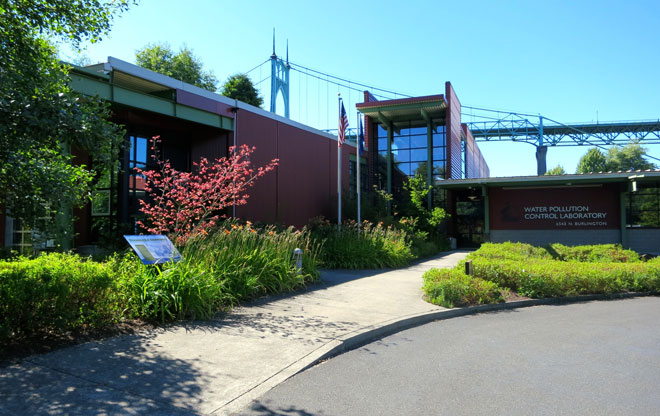
Water Wise
The 7.6-acre landscape at the Water Pollution Control Lab demonstrates a water-wise approach, with drought-tolerant native and ornamental plants and mowed lawns kept to a minimum.
Image: Carol Mayer-Reed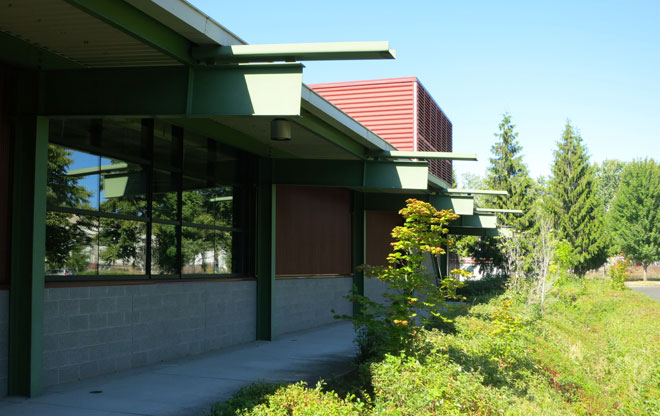
Downspouts Deliver
Visible downspouts deliver roof runoff to vegetated bioswales at the front door of the building, illustrating the connections between water and architecture, art and science.
Image: Carol Mayer-Reed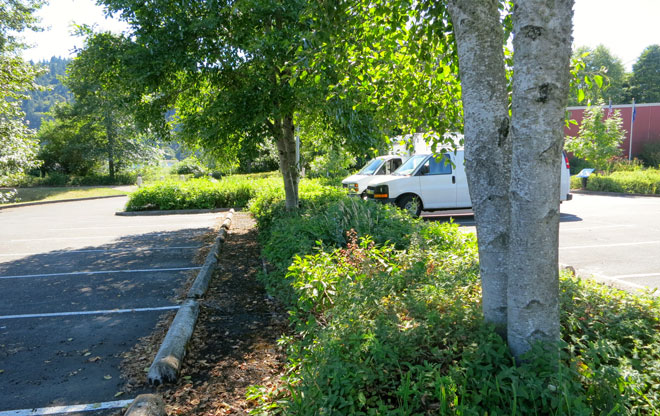
Parking Lot Bioswales
The parking lot medians are vegetated bioswales that biologically treat the surface runoff before it filters into the ground.
Image: Carol Mayer-Reed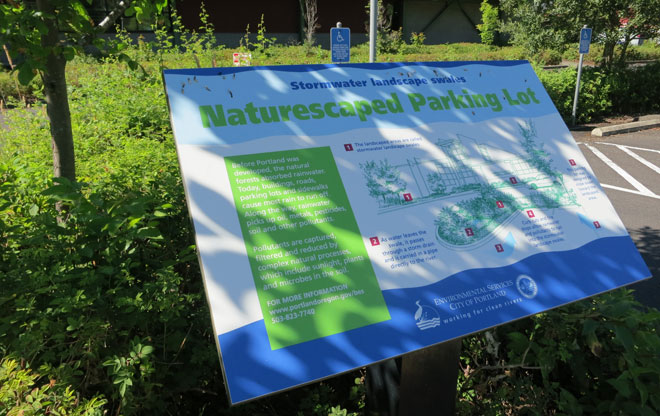
Displays Highlight Sustainability
Interpretive displays help visitors understand the sustainable features of the landscape.
Image: Carol Mayer-Reed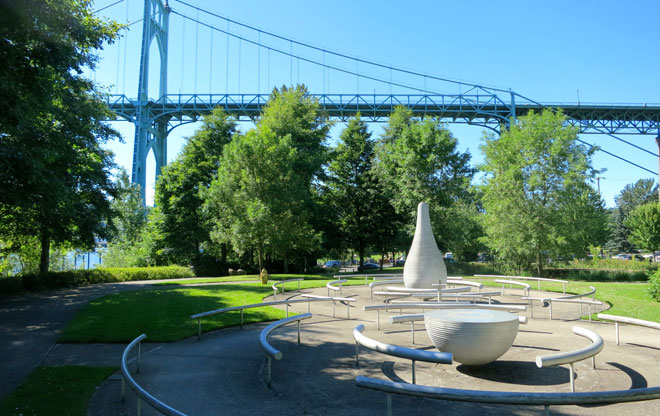
Water, Please
Water, Please is a sculpture by Don Merkt through the Regional Arts and Culture Council. The artist states, "The sculpture establishes a parity between a drop of water and a human being, both of which emanate ripples of effects and consequences upon each other."
Image: Carol Mayer-Reed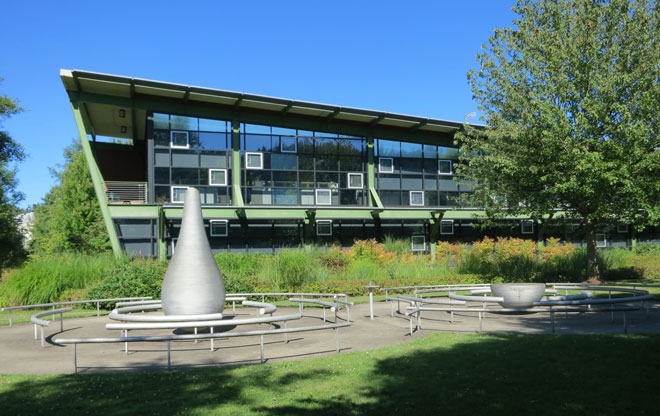
Bioswale
A bioswale vegetated with native and ornamental plants treats water from the roof of the lab.
Image: Carol Mayer-Reed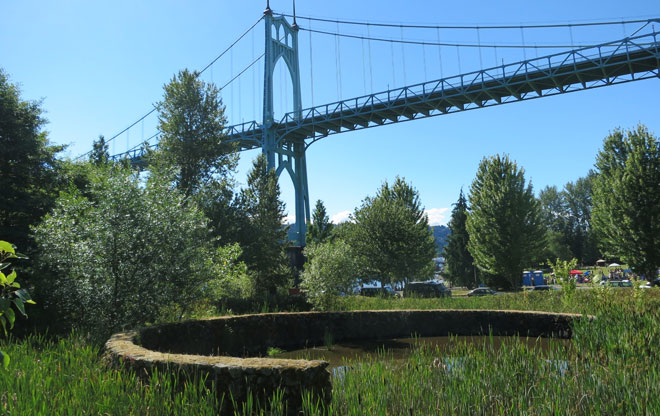
Murase's Water Flume
North of the building, Murase's water flume and vegetated ponds collect sediment and trap pollutants from stormwater runoff before they reach the river. A spectacular view of the historic St. Johns Bridge forms the backdrop.
Image: Carol Mayer-Reed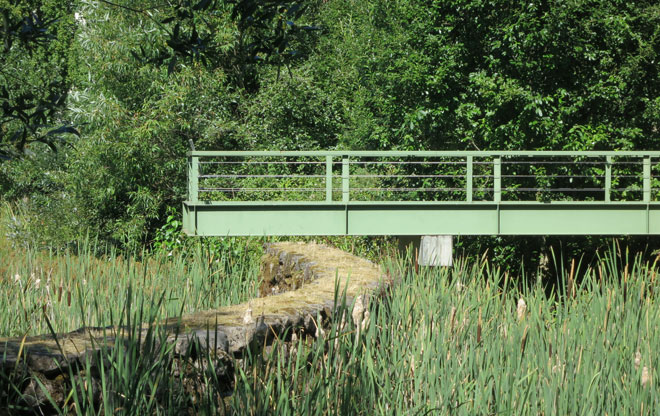
Immerse Yourself in the Landscape
The design features a dramatic steel walkway that extends out over the stone-lined pond. Here people can immerse themselves in the landscape and observe nature's way of cleaning stormwater.
Image: Carol Mayer-Reed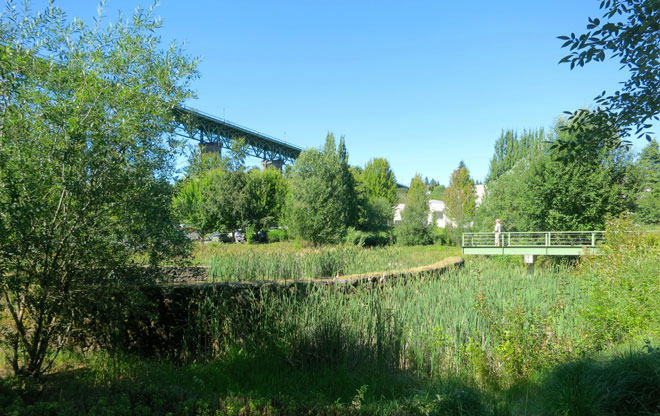
Thickets for Wildlife
Vegetation colonizing the banks of the ponds creates thickets attractive to insects and wildlife.
Image: Carol Mayer-Reed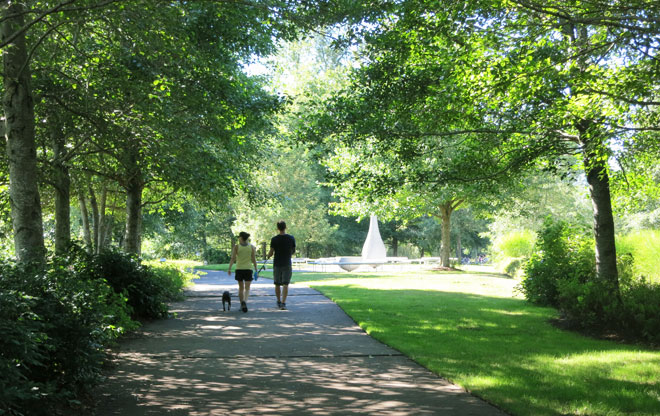
Trail Connections
A segment of the Willamette Greenway Trail runs through the laboratory, adjacent to the river. Shaded with native alder trees and other native vegetation, this trail will eventually connect to downtown Portland, about seven miles to the south.
Image: Carol Mayer-Reed